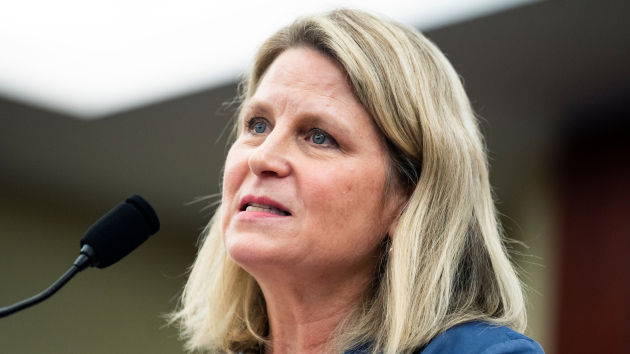Florida’s farmlands, iconic orange groves recovering following back-to-back hurricanes
Written by ABC Audio. All rights reserved. on October 18, 2024
(TALLAHASSEE, Fla. ) — Florida’s agricultural fields — including the state’s iconic orange groves and berry farms — are routinely damaged by strong storms that roll through the state.
Some of the Sunshine State’s most important farms are now recovering from two of the 2024 season’s most powerful hurricanes, which struck one after the other.
On Sept. 27, Hurricane Helene became the strongest hurricane to strike Florida’s Big Bend. Less than two weeks later, on Oct. 10, Hurricane Milton made landfall near Siesta Key. After both Category 4 storms brought life-threatening storm surge to the Gulf Coast, they turned toward the heart of the state, destroying farmland with strong winds and heavy rains, experts told ABC News.
While the state is no stranger to hurricanes, its agriculture industry is threatened every time a strong hurricane rolls in, Angela Lindsay, associate professor and disaster specialist at the University of Florida’s Institute of Food and Agricultural Sciences (IFAS), told ABC News.
Florida’s groves were heavily impacted by the recent hurricanes, which tore through regions with some of the most productive citrus acreage in the state, Matt Joyner, executive vice president and CEO of Florida Citrus Mutual, the state’s largest citrus trade association, told ABC News.
Hurricane-force winds caused defoliation — or the leaves to fall off — damaged limbs and branches and even downed entire trees, snapping them at the roots, Lindsay said. While oranges are not yet ready for harvest, they are currently near maturity and heavier, making it easier for high winds to pull the fruit from their branches, Joyner said.
“We know that we have a lot of fruit on the ground for this year’s crop,” Joyner said.
At Showcase of Citrus, an orange grove in Clermont, Florida, near Orlando, the gusts from Milton bent some trees at a 45-degree angle, owner John Arnold told ABC News.
Floods often kill the citrus groves, especially young orange trees planted in low-lying areas, Arnold said, adding that several of his young orange trees were lost to flooding.
Mitigation is difficult, the farmers said. Complicating matters even further is the uncertainty of the forecast up until just a few days before landfall, making it difficult to tend to hundreds and thousands of acres in a short amount of time, Michael Hill, co-founder and CEO of H&A Farms in Mount Dora, Florida, told ABC News.
Citrus trees can be staked in order to provide support from the hurricane-force winds, Lindsay said. Some farmers have tried wrapping the trees in tarp-like material, but that technique is not commonly used, Lindsay added.
“I’ve seen storms that tipped over entire groves of mature trees,” Arnold said.
There’s not much that can be done to protect crops in the ground, said Hill, who grows strawberries and blueberries — two of the most vulnerable crops in the state, after citrus, experts say.
A tree fell on Hill’s home in Eustis, Florida, but once the storm passed, all he cared about was the state of his fields.
“That’s the least of my worries,” he said of the downed tree.
About 60% of the plastic mulch the strawberries were planted in on Hill’s farm were torn up by Milton, he said. Hill and his workers are attempting to re-lay the plastic while keeping the plants alive in a cooler.
For the dairy industry, the cows still need to be milked, but the stressed cows likely produce much less, Jeb Smith, president of the Florida Farm Bureau Federation, told ABC News.
“It may be a month before they’re able to get back to where production should be,” Smith said.
Structural damage often includes buildings and fences that require re-building, Smith said. Showcase of Citrus sustained some damage to its screen buildings for growing grapefruit, Arnold said. A barn at H&A Farm was destroyed by Milton’s hurricane-force winds, and the entire facility lost power for days, Hill said.
Once the storm rolls through, farmers try to save whatever fruit fell to the ground and attempt to stake damaged trees in an attempt to support what’s remaining, Lindsay said.
Milton was the fourth named storm to hit many of the farms in Central Florida in 14 months, following Hurricane Irma in September 2023 and Debby in early September 2024, Smith said.
“It leads to more impact, when you have blow after blow,” Smith said.
In 2022, Florida’s agriculture industry generated $182.6 billion in revenue and supported more than 2.5 million jobs, according to the Florida Department of Agriculture & Consumer Services. While citrus is Florida’s signature crop, the state is an important producer of many other agricultural products. Florida is the second-largest producer of all oranges, strawberries, sweet corn and non-Valencia oranges in the country. More than 40 vegetables are grown commercially in the state, which ranks in the top three on production value of tomato, bell pepper, snap bean, squash, cabbage and cucumber, according to the University of Florida.
Sugarcane, timber, cattle and dairy are also major commodities for the state, according to the U.S. Department of Agriculture.
Other storms in the recent past have been just as devastating, the experts said.
Farmers were in disbelief over the amount of fruit that had been blown to the ground after Hurricane Irma in 2017 and Hurricane Ian in 2022, Lindsay said. The citrus industry saw a 1,000% loss as a result of Ian, Smith said.
In 2018, after Hurricane Michael struck the panhandle, researchers and officials couldn’t even get to some of the fields — many of which contain row crops of tomatoes and cotton — to assess the damage because of the damaged roadways, Lindsay said.
“We were using drones to look at them,” she said. “There wasn’t a lot there.”
Hurricane Ian in 2022 led to an estimated $7.9 billion in agricultural losses and impacted nearly 5 million acres, a report by the university found. Hurricane Irma in 2018 caused about $1.3 billion in losses, impacting about 1.9 million acres, according to an IFAS report.
Milton resulted in losses between $1.5 billion and $2.5 billion, in addition to the estimated $1.5 billion in damage caused by Idalia, Debby and Helene in the 13 months prior, according to a preliminary assessment by the Florida Department of Agriculture and Consumer Services released Thursday.
Every named storm in recent memory that has passed through central Florida has caused damage to Arnold’s farmland, he said.
“Just as we replant trees and rehabilitate groves and look to recover and move into better seasons, we’re getting hit with these storms,” Joyner said. “It’s really been difficult for growers to kind of regain their footing and move forward.”
In addition to crop insurance, there are several programs in place for farmers, including loan and recovery programs by the USDA’s Farm Service Agency, Lindsay said. The data collected by IFAS is sent to federal officials, who then determine the amount of aid to be distributed to farmers.
Once the damage is assessed, farmers then must make long-term decisions on how to move forward, Smith said.
“Some of these producers will have impacts years down the road,” Smith said, adding that the adverse impacts on the citrus industry can even last for decades.
Hurricanes are just one of the hazards Florida farmers face regularly. The last few years have been tough on the industry, with citrus farmers experiencing widespread greening, a disease that impacts citrus trees, Arnold said.
Combined with freezes, market prices, other diseases, labor challenges and inflation, farmers in the state have left many farms struggling to keep afloat, Hill said.
“When you see Florida strawberries in your stores this year, know that it came from a farmer that chose not to give up,” Hill said.
Copyright © 2024, ABC Audio. All rights reserved.





